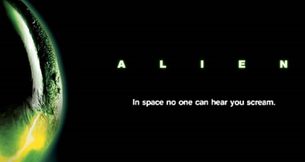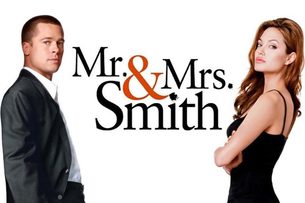Loglines: what they really are and how to write a great one
Every writer trying to garner interest in their script has to face the inscrutable beast that is the ‘logline’. Whether you see them as a helpful creative aid or a barely tolerable sales necessity, there’s a particular art to crafting them. In this article, Film London’s Production & Development Executive Sanj Krishnan walks us through it.
What is a logline?

Imagine you’re in a wild river, being pulled by a ferocious current, and using your last reserves of energy to stay afloat. You see a snapped-off tree branch in the water ahead, and you do your best to grab hold of it and hang on for dear life. That log has thrown you a line.
Similarly, for scripts not to disappear in the rapid river that is the competitive screenplay market, you need to grab hold of a logline. The term is believed to come from when Aristotle fell into the River Styx, and in his final act he affixed his screenplay to a floating log, and it was later found and produced as My Big Fat Greek Wedding.

A logline is simply a concise and punchy way of describing what your film is about. But a more useful way of looking at it is that it teases the emotional energy of your film.

You might have heard the term ‘tagline’; that’s not the same. A tagline tends to mean something that goes on a poster. For example, Alien’s (1979) memorable poster tagline was “In space, no one can hear you scream”, which creates atmosphere but isn’t that useful as the one thing you say to create interest in the screenplay. However, Alien’s logline is equally legendary: “Jaws in space”. So much is conveyed with so few words.
An effective logline generally needs to tell us:
Who the main character is
What situation the film puts them in
What that means for them (whether a threat, an opportunity or a challenge) - in other words, why we should care
And you make us care by teasing the conflict, what’s at stake and the emotions this’ll make us feel. You can spell it out or you can imply it.
Let’s look at an example - Mr and Mrs Smith (2005). Here’s the short description from a VOD platform (though it could easily be the logline):
When husband and wife assassins discover they are working for rival agencies, they have to decide whether to put love ahead of business.

It sets up the protagonists and their situation and how that’s going to create conflict. But it feels like that conflict could take the form of a talky drama at their house where they debate who is going to quit. Whereas Simon Kinberg’s actual logline was:
The world’s top two assassins, who happen to be husband and wife, are hired to kill each other.
It clearly signals that it’s an action movie, and it tells you that action is going to be killer (pun intended) because you know that they’re the very best assassins in the business.
When should you be thinking about loglines?
The likelihood is that you’ll first be thinking about a logline when you’re entering your script into a competition and there’s a box (with a red asterisk no less) asking you for your film’s logline. Or when you send out a query letter. In other words, after you’ve written your script and you’re trying to get it out there.
But some screenwriting books (for example Blake Snyder’s Save the Cat and David Trottier’s The Screenwriter’s Bible) advocate using loglines as part of your idea generation process. The logic is: you can test whether your idea will have the emotional engine needed to power a film by whether you can explain it in an arresting logline. According to Snyder, what you’re looking for is “an itch you have to scratch”.
Starting with a logline may not work for everybody, as many writers discover their story rather than going in with a preconceived notion of it. But it can be helpful to get into the habit of trying to tell your story to people in a pithy way while you’re developing it, so that you can refine your own understanding of what it’s truly about.
How do we write truly great loglines?
What you’re trying to do is give the reader or listener an “a-ha!” moment—you want them to hear your logline, realise the dramatic punchline of sorts for themselves and go ‘ooooooh’. You’re trying to capture the irresistible tension that your film’s setup can no longer contain and threatens (or promises) to release.
This is a little easier for high concept films, because by their nature they’re driven by concept and plot. Here are three examples I worked up. See if you can guess the films:
A teen who accidentally goes back in time to the 1950s undoes his parents’ meet-uncute, and now he has to engineer a new way for them to fall in love if he wants to, you know, still exist.
When a family highly esteemed for its magical abilities starts to lose its powers, the only ones who can save them are the one unmagical daughter in the family and that uncle they don’t talk about.
When a boorish newscaster starts living the same day over and over—and not even death can set him free—maybe the universe is trying to tell him something.

But even for more character-driven or introspective indies, it’s still possible to craft an eye-catching and authentic logline. Let’s look at some recent indie films.
Cha Cha Real Smooth - two alternative descriptions from VOD platforms:
1. A young man who works as a Bar Mitzvah party host strikes up a friendship with a mother and her autistic daughter.
2. When Andrew befriends a local mom, Domino, and her daughter, Lola, he finally discovers a future he wants – even if it might not be his own.
The first doesn’t really tell us what kind of journey the character is going on, and how we’re going to feel. It also puts an opaque emphasis on ‘autistic’ that is actually misleading. The second description is better in that it gives us a sense of what this all means for Andrew (also, naming the characters makes us feel more connected to them).
The logline for The Forty Year-Old Version is pretty effective:
A down-on-her-luck New York playwright decides to reinvent herself and salvage her artistic voice the only way she knows how — by becoming a rapper at age 40.
A logline is your chance to communicate the style and tone of the film. That’s particularly crucial for a comedy, or where your film hangs on something about its voice or execution rather than the originality of the premise, as for instance in The Worst Person in the World:
Chronicles of four years in the life of Julie, a young woman who navigates the troubled waters of her love life and struggles to find her career path, leading her to take a realistic look at who she really is.
This marketing blurb checks all the protagonist/situation/meaning boxes, but what’s missing is a sense of the film’s tone and what makes it unique. The main character is engagingly messy and playful, but this description feels very straight-laced and not very original.
By contrast, this logline for Red Rocket captures the roguish quality of its appalling but compelling main character:
Mikey Saber—charismatic con man and washed-up porn star—plots his return to the big time from small-town Texas in this story of an American hustler and a hometown that barely tolerates him.
All of these points apply not just to fiction but also to documentaries:
Three Identical Strangers
In 1980 New York, three young men who were all adopted meet each other and find out they're triplets who were separated at birth. But their quest to find out why turns into a bizarre and sinister mystery.
Finding Vivien Maier
The story of a mysterious nanny, who secretly took over 100,000 photographs that were hidden in storage lockers and, discovered decades later, is now among the 20th century’s greatest photographers.
Tinder Swindler
Posing as a wealthy, jet-setting diamond mogul, he wooed women online then conned them out of millions of dollars. Now some victims plan for payback.
They all set up questions that demand answering: Why were the triplets separated? What’s the deal with the nanny’s photos? Will the women get revenge on this jerk?
It doesn’t have to be a sensationalised question. For instance with Netflix’s docuseries Daughters of Destiny:
Five girls from India's most impoverished families attend a boarding school designed to create opportunities as they strive for a brighter future.
You know the plight of the doc subjects, you know what world they’re going into, you’re curious and hopeful that it’s going to work out.
It’s not always easy to find actual logline examples by the writers (as opposed to the short descriptions you’ll find in cinema listings or streaming platforms. But The Black List is a great resource for genuine loglines. Here are a couple of strong examples:
The Half of It by Alice Wu
A smart, lonely teen is commissioned by the high school running-back to write love letters to the object of his—and her—affection.
The Repossession by Megan Amram
Twenty years after a failed exorcism, a meek young woman becomes unlikely friends with the foul-mouthed demon that possessed her as a child.
And here are some that I think could be tweaked:
Set It Up by Katie Silberman
Two young assistants realize they can get more free time if they occupy their bosses’ time by setting them up on a date.
Tweaked: Two overworked young assistants set up their highly driven—and difficult—bosses in hopes that love might soften them, and in turn make their own lives easier.
Miss Sloane by Jonathan Perera
A powerful lobbyist sacrifices her career on Capitol Hill so she can push through an amendment enforcing stricter federal laws regulating guns.
Tweaked: A DC lobbyist who’s made her name representing the big guns stakes everything on helping a plucky nonprofit fight for gun control legislation.
Life Itself by Dan Fogelman
A multigenerational love story that weaves together a number of characters whose lives intersect over the course of decades from the streets of New York to the Spanish countryside and back.
Tweaked: From the creator of the wonderful This Is Us, a film that will make you feel a lot of emotions but ultimately doesn’t come together in a satisfying way and so I can’t write a good logline for it.
TL;DR, or: I wish this article had a logline
Your job with a logline is, in a couple of punchy sentences, to convey 1) your main character(s), 2) the situation the film puts them in, and 3) the tension this creates—and to do it in a way that captures the tone of your film.
This article was adapted from a talk Sanj gave to filmmakers selected for Film London’s Production Finance Market New Talent strand in 2022. The market is for filmmaking teams looking to finance their first or second feature film. Successful applicants enjoy a day of one-to-one meetings with financiers, and benefit from pitch training and masterclasses on independent film financing. Keep an eye on the website for news about the next iteration.